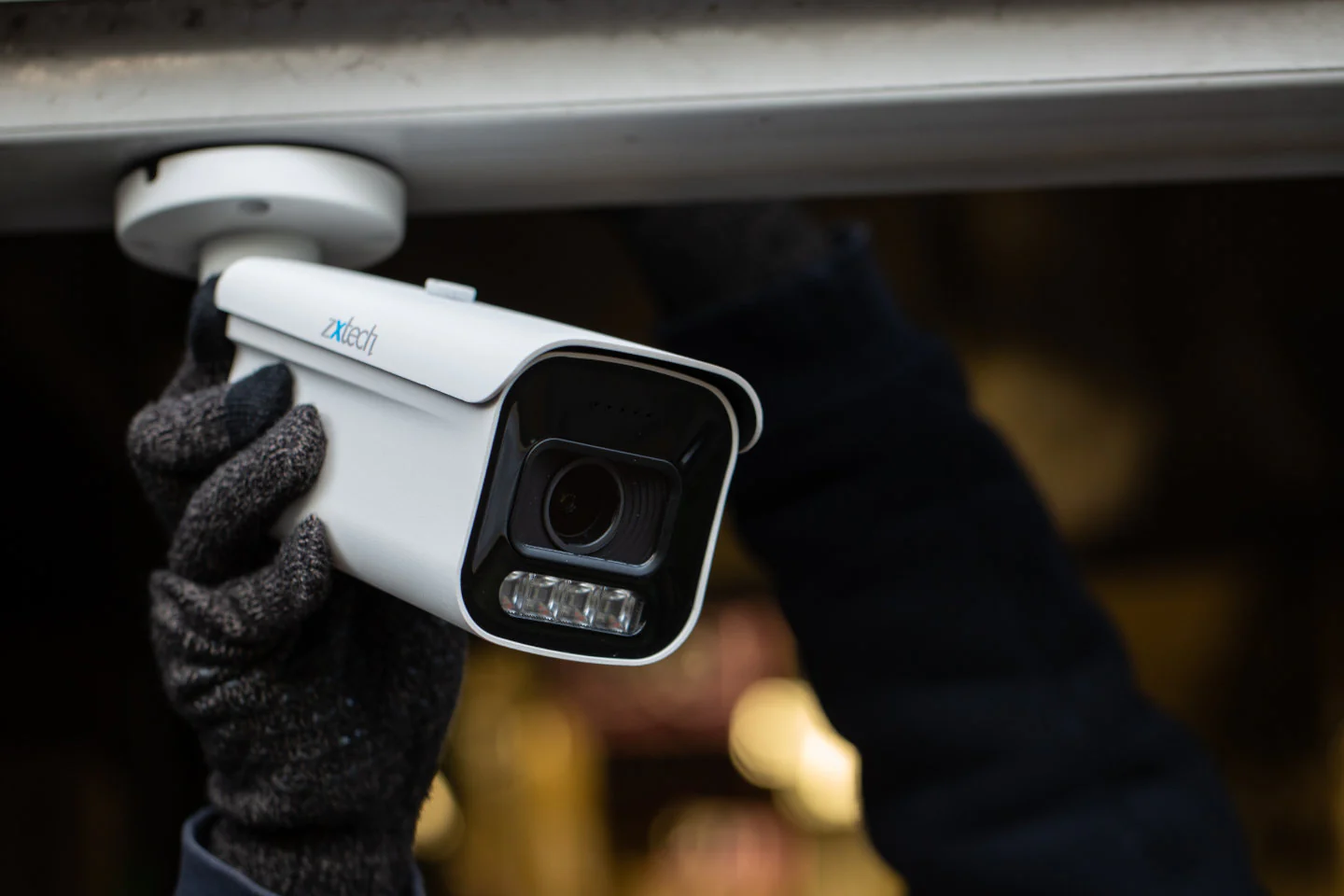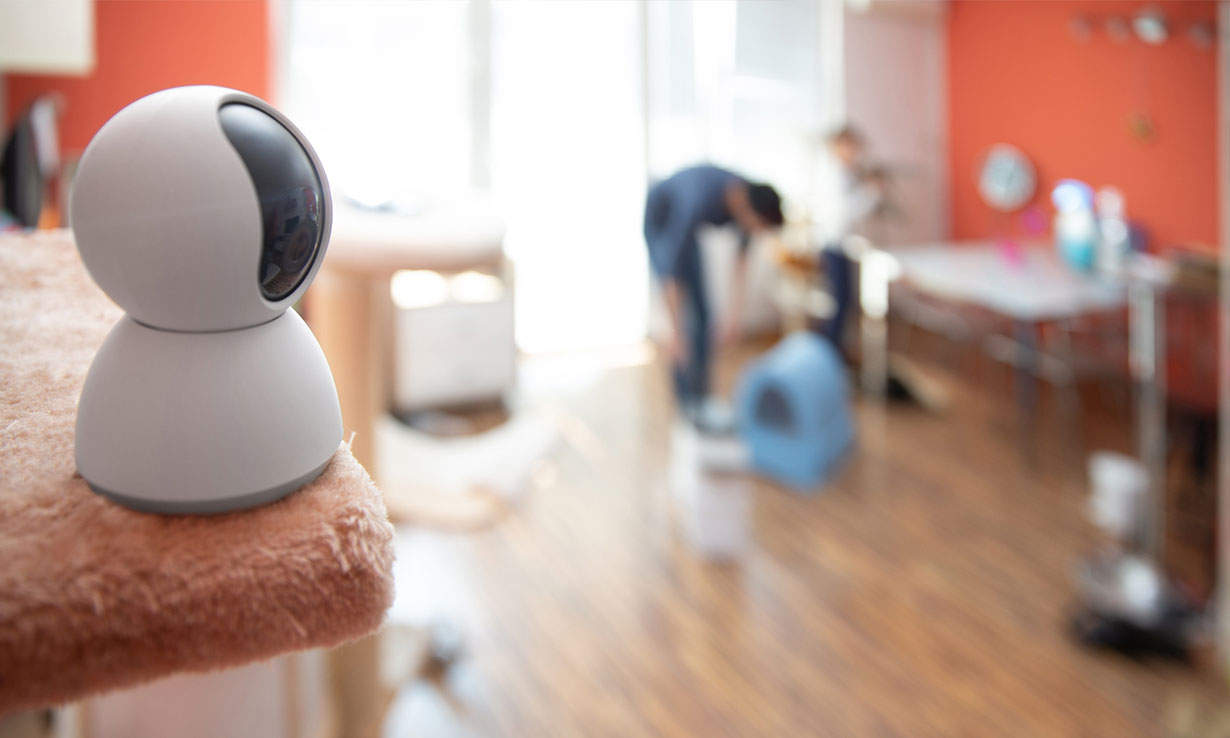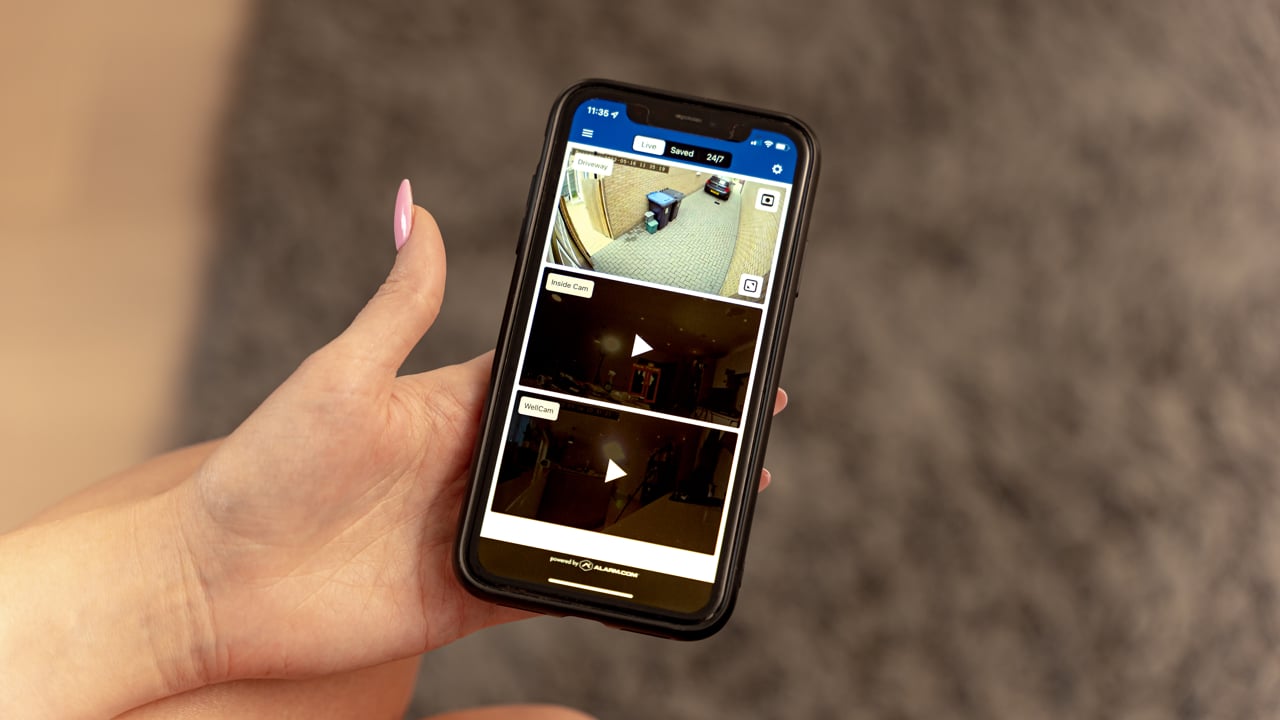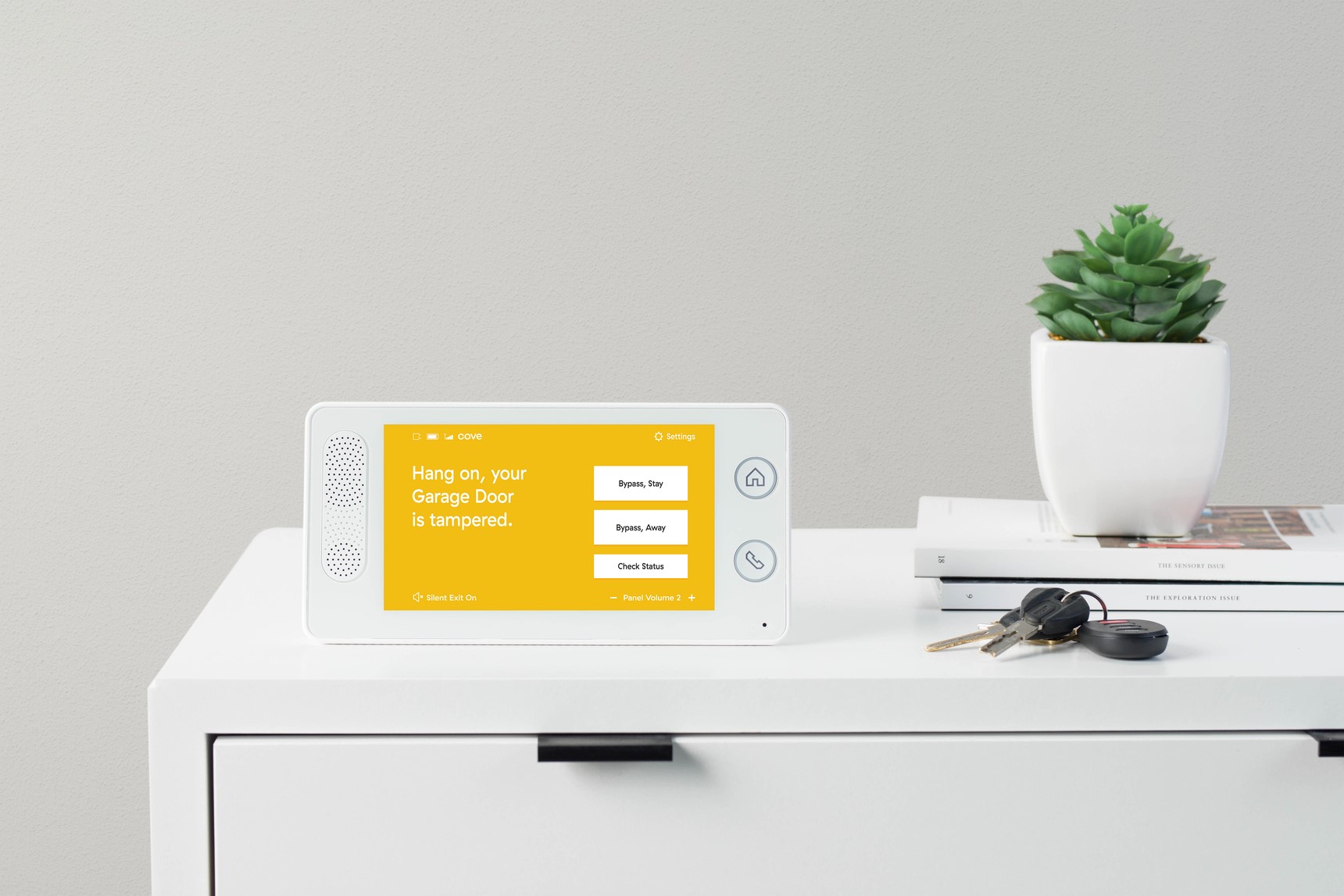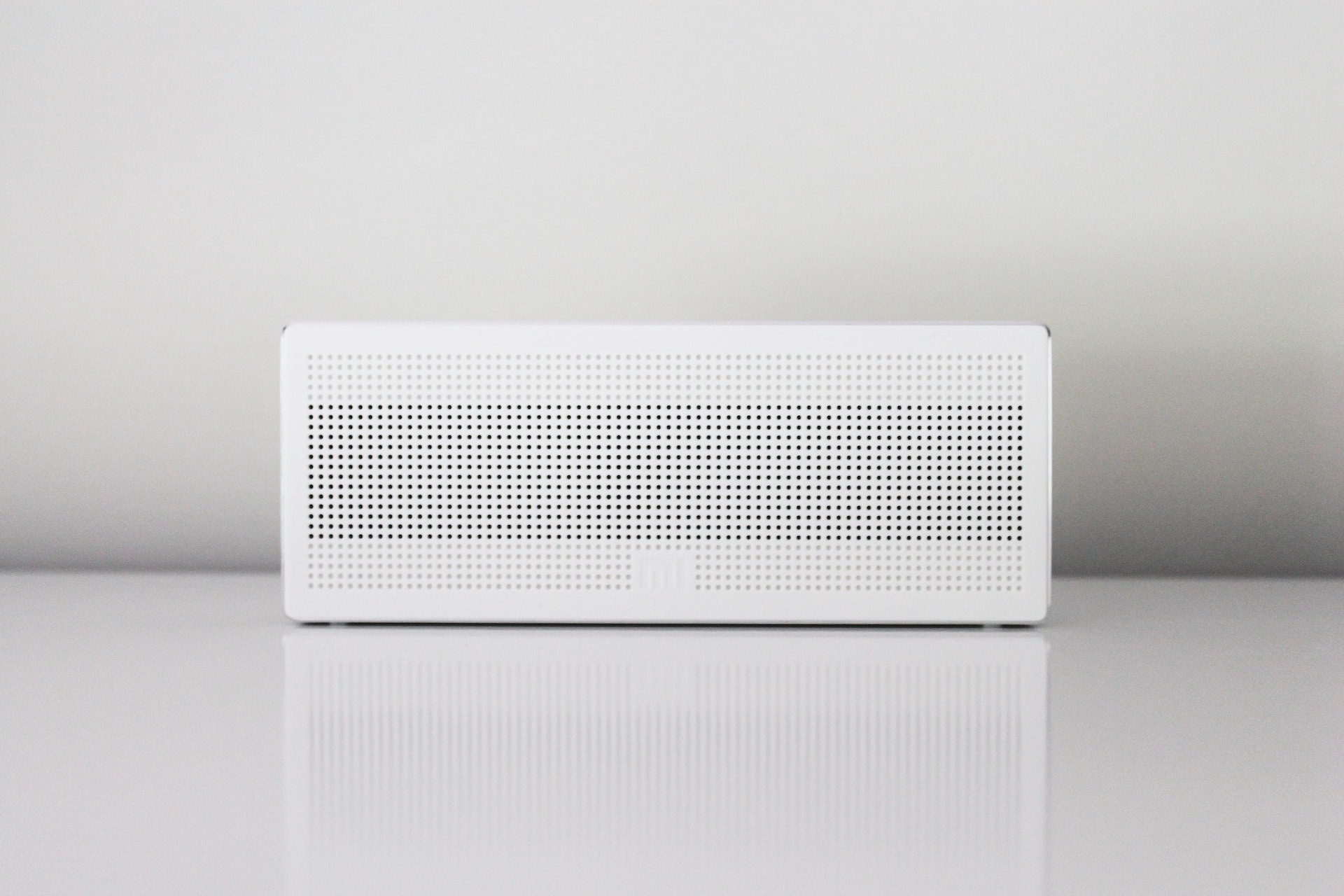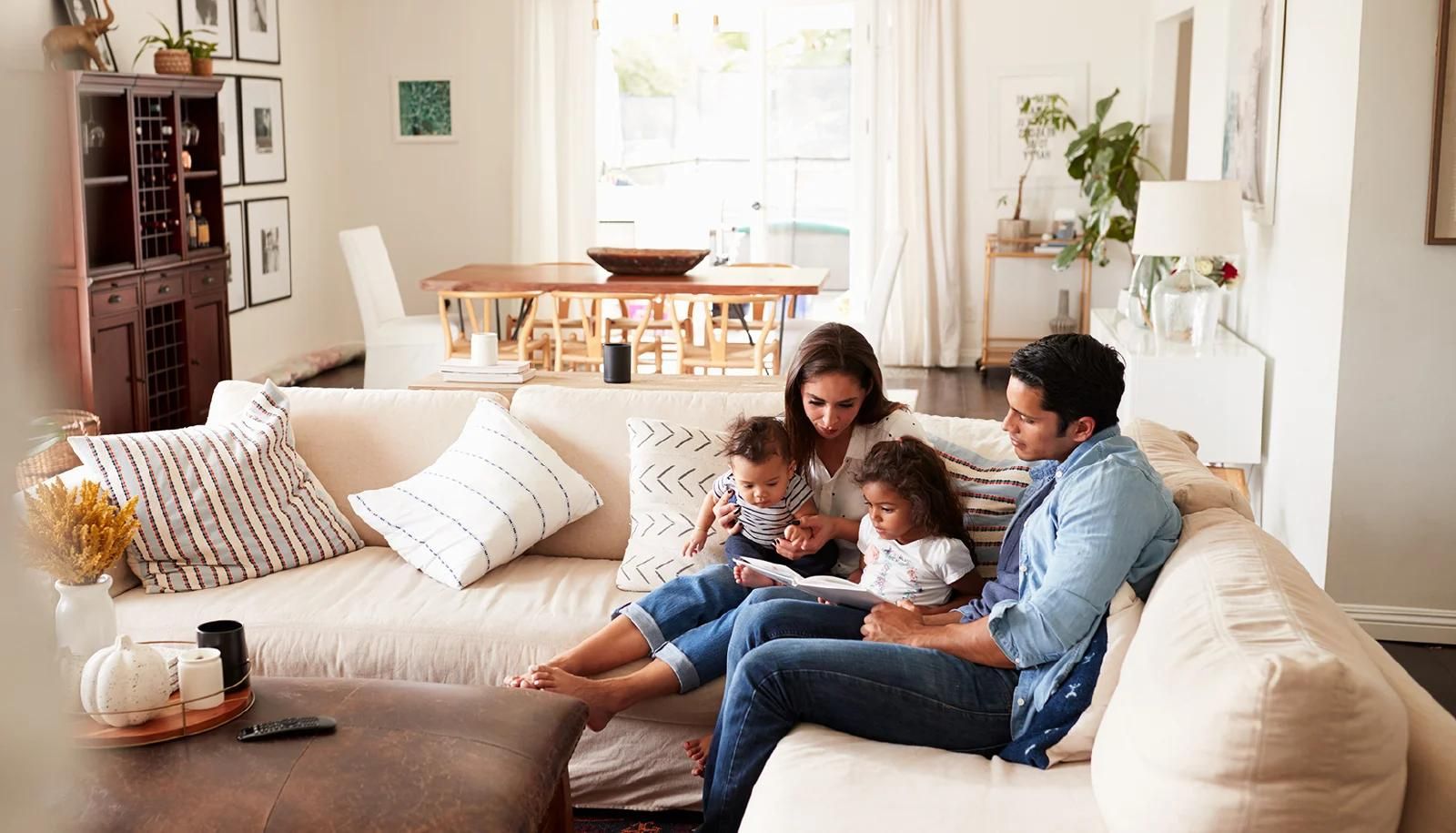Home>Home Security and Surveillance>What To Look For In Your Home Surveillance System
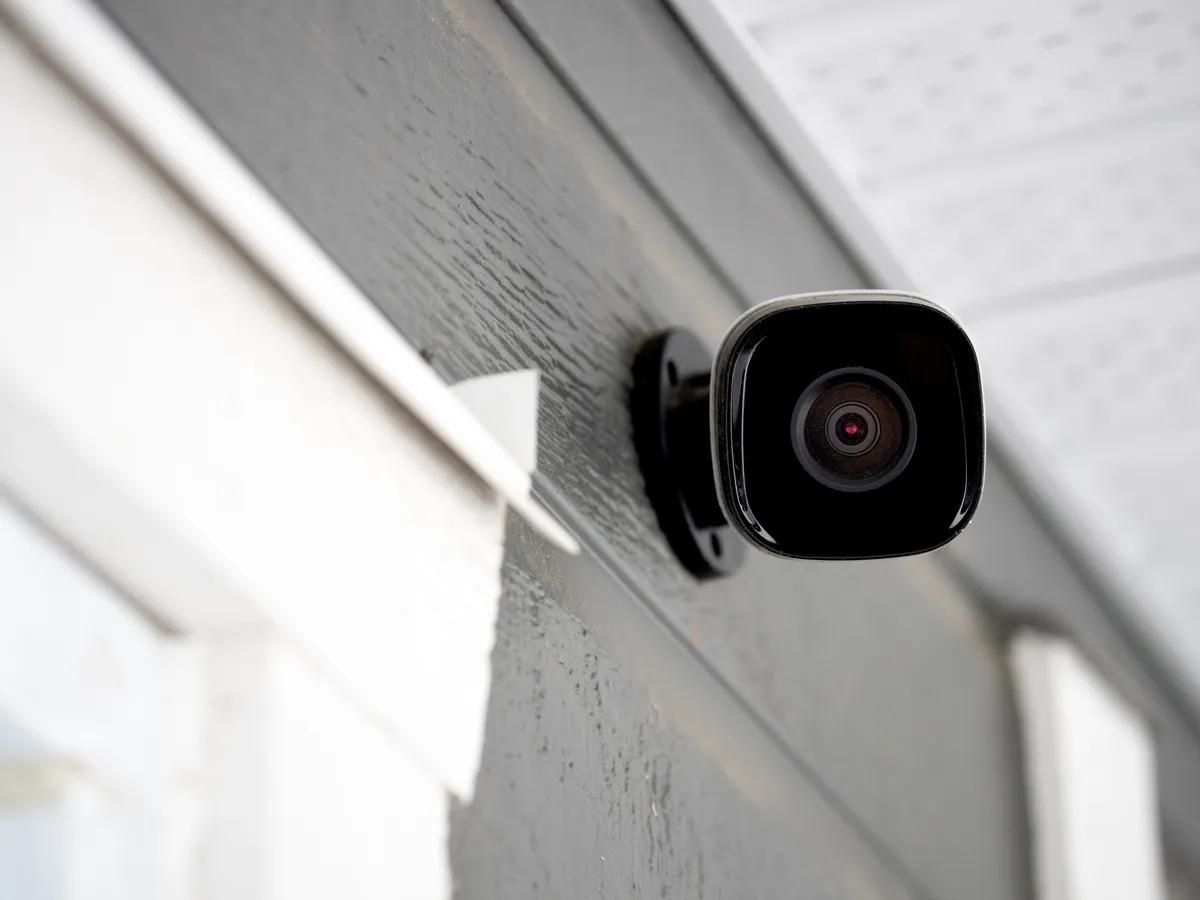

Home Security and Surveillance
What To Look For In Your Home Surveillance System
Modified: March 6, 2024
Ensure your home security and peace of mind with a comprehensive surveillance system. Discover the key features and factors to consider for reliable home security and surveillance.
(Many of the links in this article redirect to a specific reviewed product. Your purchase of these products through affiliate links helps to generate commission for Storables.com, at no extra cost. Learn more)
Introduction
Securing your home and protecting your loved ones is a top priority. With advancements in technology, home surveillance systems have become more accessible and affordable than ever before. Whether you’re worried about burglary, monitoring your children or pets, or simply keeping an eye on your property, a home surveillance system can provide you with the peace of mind you need.
When it comes to choosing the right home surveillance system, there are several factors to consider. From the type of system to camera features, storage options, remote monitoring capabilities, installation considerations, and even privacy and security concerns, each element plays a critical role in determining the effectiveness and convenience of your system.
In this article, we will guide you through the key aspects to look for in a home surveillance system. By understanding the different options and their features, you can make an informed decision and create a secure environment for your home.
Key Takeaways:
- Choose between wired and wireless home surveillance systems based on your needs for reliability and flexibility in camera placement.
- Prioritize camera features, storage options, remote monitoring, and privacy and security to create a secure environment for your home.
Types of Home Surveillance Systems
When it comes to home surveillance systems, there are two main types to consider: wired systems and wireless systems.
Wired systems are typically hardwired into your home’s electrical and network system. They offer a reliable connection and are not dependent on Wi-Fi, which can be affected by factors such as distance, interference, or power outages. However, the installation process for wired systems can be more complex and may require professional assistance.
On the other hand, wireless systems rely on Wi-Fi to transmit data. They provide flexibility in terms of camera placement and can be easily installed without the need for extensive wiring. Wireless systems are convenient and offer remote access through mobile apps. However, they may be prone to signal interference and have limited range depending on the strength of your Wi-Fi network.
Camera Features to Consider
When choosing a home surveillance system, the camera features play a significant role in capturing high-quality footage and ensuring reliable monitoring. Here are some key camera features to consider:
1. Resolution: The higher the resolution, the clearer and more detailed the video footage will be. Look for cameras with at least 1080p HD resolution for optimal clarity.
2. Field of View: The field of view determines how much area the camera can cover. Wide-angle lenses offer a broader view, while cameras with pan-tilt-zoom capabilities allow you to adjust and focus on specific areas.
3. Night Vision Capability: For 24/7 surveillance, consider cameras with infrared LEDs for high-quality night vision. This ensures that you can monitor your property even in low light conditions.
4. Motion Detection: Cameras with motion detection can alert you when there is movement detected within the camera’s range. This feature helps minimize false alarms and saves storage space.
5. Two-way Audio: Two-way audio allows you to communicate with people near the camera. This can be useful for monitoring children, interacting with visitors, or deterring intruders.
Storage Options
The storage options of a home surveillance system determine how your video footage is stored and accessed. There are two primary storage options to consider:
1. Cloud Storage: Cloud storage enables you to store your video footage securely online. It offers accessibility from anywhere and protects your footage even in the event of camera theft or damage. However, it usually requires a monthly subscription fee and may have limitations on storage capacity.
2. Local Storage: Local storage involves storing your footage on a physical device, such as a hard drive or Network Attached Storage (NAS) device. This option provides more control over your footage and no recurring fees. However, it may have limitations in terms of storage capacity and vulnerability to loss or damage.
Having both cloud and local storage options can offer redundancy and ensure that your footage is backed up in multiple locations.
Remote Monitoring and Accessibility
The ability to monitor your home surveillance system remotely is a key feature to consider. Here are some aspects of remote monitoring and accessibility to look for:
1. Mobile App Compatibility: Look for systems that offer mobile apps compatible with your smartphone or tablet. This allows you to access your cameras, view live footage, and receive alerts and notifications on the go.
2. Live Streaming Capability: The ability to have live streaming access to your cameras is crucial for real-time monitoring. Make sure the system provides smooth and lag-free live streaming to stay updated with events as they unfold.
3. Alerts and Notifications: Look for systems that offer customizable alerts and notifications. This allows you to receive instant notifications on your mobile device when specific events, such as motion detection or security breaches, occur.
Having remote access and control over your home surveillance system ensures that you can monitor your property at any time and from anywhere, providing you with peace of mind while you’re away.
Remember to check the next 3 Subtitles
Key Takeaways:
- Choose between wired and wireless home surveillance systems based on your needs for reliability and flexibility in camera placement.
- Prioritize camera features, storage options, remote monitoring, and privacy and security to create a secure environment for your home.
Types of Home Surveillance Systems
When it comes to home surveillance systems, there are two main types to consider: wired systems and wireless systems.
Wired Systems
Wired home surveillance systems are known for their reliability and stable connection. These systems are typically hardwired into your home’s electrical and network infrastructure. The cameras are connected to a central recording device, such as a Digital Video Recorder (DVR) or Network Video Recorder (NVR), through cables. This direct connection ensures a consistent and secure transmission of video footage.
One of the key advantages of wired systems is that they are not dependent on Wi-Fi for connectivity. This makes them a reliable option even in areas with weak or unreliable wireless signals. Wired systems are also less susceptible to signal interference or disruption caused by factors such as distance or obstacles.
Installation of wired systems may require professional assistance as it involves running cables through walls, ceilings, and other structures. This can be time-consuming and may involve additional costs. However, once installed, a wired system provides a robust and long-term surveillance solution.
With wired systems, you have the flexibility to choose between analog cameras and IP cameras. Analog cameras provide standard definition (SD) or high definition (HD) video footage and require coaxial cables for connectivity. IP cameras, on the other hand, offer higher resolution video, often in 1080p or 4K, and utilize Ethernet cables for network connectivity.
Wireless Systems
Wireless home surveillance systems have gained popularity due to their convenience and ease of installation. These systems use Wi-Fi to transmit video data from the cameras to a central hub or recorder.
Wireless systems offer flexibility in terms of camera placement since they are not restricted by wired connections. You can easily install and position the cameras wherever they are needed without the hassle of running cables. This makes wireless systems suitable for both indoor and outdoor surveillance.
However, wireless systems can be affected by factors such as distance, signal interference, and power outages. If your Wi-Fi network is weak or unreliable, it may result in a loss of connection or intermittent video streaming. To mitigate these issues, ensure that your wireless system is equipped with strong wireless antennas and supports the latest Wi-Fi standards, such as 802.11ac.
Another consideration with wireless systems is the requirement of power supply for the cameras. Most wireless cameras are powered by either a power adapter or batteries. Battery-powered cameras offer flexibility in terms of placement but require periodic recharging or battery replacement. Power adapter-powered cameras require access to a power outlet but provide a more reliable power source.
It’s important to note that wireless systems may be susceptible to signal interference from other wireless devices in your home, neighboring Wi-Fi networks, or even physical obstacles like walls or trees. Therefore, it’s recommended to conduct a site survey and ensure that your wireless system’s signal strength is sufficient to cover the desired surveillance areas.
– Continue with the next subtitle: Camera Features to Consider
Camera Features to Consider
When choosing a home surveillance system, the camera features play a significant role in capturing high-quality footage and ensuring reliable monitoring. Here are some key camera features to consider:
Resolution
The resolution of the camera determines the clarity and detail of the video footage. Higher resolution cameras capture more pixels, resulting in sharper and more detailed images. Look for cameras with at least 1080p HD resolution, which provides a clear and crisp representation of the surveillance area. If you want even more detail, consider cameras with 4K resolution, which offer incredibly sharp images.
Field of View
The field of view refers to the area that a camera can cover. Cameras with a wide-angle lens can capture a broader view, allowing you to monitor larger areas with a single camera. This is particularly useful for outdoor surveillance, where you may want to monitor a wide expanse of your property. Additionally, consider cameras with pan-tilt-zoom (PTZ) functionality, enabling you to remotely adjust and focus the camera to specific points of interest.
Night Vision Capability
To ensure round-the-clock surveillance, consider cameras with night vision capability. These cameras are equipped with infrared (IR) LEDs that illuminate the area in front of the camera, allowing it to capture clear footage even in low-light or no-light conditions. Look for cameras with a good range of night vision to ensure proper coverage, especially for outdoor surveillance during nighttime.
Motion Detection
Motion detection is a crucial feature that enhances the efficiency of your home surveillance system. Cameras with motion detection capability can detect movement within their field of view and automatically trigger recording or send alerts to notify you of any activity. This not only helps in reducing false alerts caused by irrelevant movement, such as blowing leaves, but also saves storage space by only recording when necessary.
Two-way Audio
Having the ability to communicate with the person on the other end of the camera can be valuable in various scenarios. Cameras equipped with two-way audio enable you to listen to sounds near the camera and also speak through a built-in speaker. This feature is especially useful for remotely talking to family members, visitors, or even deterring potential intruders.
When selecting a home surveillance system, consider your specific requirements and prioritize the camera features that align with your needs. A combination of high resolution, wide field of view, reliable night vision, efficient motion detection, and two-way audio can greatly enhance the effectiveness of your surveillance system.
– Continue with the next subtitle: Storage Options
Storage Options
The storage options of a home surveillance system determine how your video footage is stored and accessed. Here are two primary storage options to consider:
Cloud Storage
Cloud storage is becoming increasingly popular for home surveillance systems. With cloud storage, your video footage is securely stored in the cloud, which can be accessed remotely through an internet connection. Here are some key advantages of cloud storage:
– Accessibility: Cloud storage allows you to access your video footage from anywhere with an internet connection. This means you can check in on your home and view recorded events while you’re away, using a computer, smartphone, or tablet.
– Redundancy: Cloud storage offers a level of redundancy that ensures your footage is protected even in the event of camera theft, damage, or physical loss. By storing your footage off-site, you can have peace of mind knowing that your valuable recordings are safe.
– Scalability: Cloud storage providers typically offer different storage plans to accommodate various needs. This flexibility allows you to choose the storage capacity that suits your requirements without having to invest in additional hardware.
It’s important to note that cloud storage usually requires a monthly or annual subscription fee, depending on the storage plan and provider. Additionally, depending on your internet connection speed, there may be limitations on the speed at which you can upload and access your footage.
Local Storage
Local storage involves storing your video footage on physical devices located within your premises. Common local storage options include hard drives, Network Attached Storage (NAS) devices, or even dedicated memory cards in the cameras themselves. Here are some advantages of local storage:
– Control: With local storage, you have full control over your footage. You don’t have to rely on an internet connection or a cloud service provider to access your recordings. You can directly access and manage your footage locally.
– No Monthly Fees: Unlike cloud storage, local storage does not usually have any recurring fees. Once you have purchased the storage device, you can use it without incurring additional costs.
– Privacy: Some individuals may have concerns about their video footage being stored on remote servers. With local storage, you have the peace of mind knowing that your footage remains within your premises.
However, it’s important to consider the limitations of local storage as well. The storage capacity of physical devices may be limited, especially if you’re using memory cards or small-scale hard drives. Additionally, since the footage is stored locally, there is a risk of loss or damage due to theft, fire, or other physical disasters.
Many surveillance systems offer the option to use both cloud storage and local storage. This allows you to enjoy the benefits of remote accessibility and redundancy provided by cloud storage while also having a local backup for added security.
– Continue with the next subtitle: Remote Monitoring and Accessibility
Remote Monitoring and Accessibility
The ability to remotely monitor and access your home surveillance system is essential for staying connected and informed about the security of your property. Here are some key features to consider for remote monitoring and accessibility:
Mobile App Compatibility
When choosing a home surveillance system, check if it offers a mobile app that is compatible with your smartphone or tablet. A mobile app allows you to access your surveillance system from anywhere with an internet connection. You can view live video feeds, playback recorded footage, and manage your system settings right from your mobile device. Look for a user-friendly app that provides a seamless and intuitive interface for easy navigation and control.
Live Streaming Capability
Live streaming capability enables you to view real-time video footage from your surveillance cameras. This feature allows you to keep an eye on your home while you’re away, ensuring you stay connected to any ongoing events. Smooth and lag-free live streaming is crucial for an optimal remote monitoring experience, enabling you to assess situations and respond promptly if necessary. Make sure the system you choose provides reliable and high-quality live streaming capabilities.
Alerts and Notifications
Alerts and notifications are essential for real-time updates about any suspicious activity or events detected by your surveillance system. Look for a system that offers customizable alerts that can be sent via push notifications, emails, or text messages. This feature allows you to receive instant notifications when motion is detected, a door or window is opened, or any other predefined triggers occur. Customizable alerts help minimize false alarms and ensure that you are promptly notified of any actual security threats.
With mobile app compatibility, live streaming capability, and alerts and notifications, you can have peace of mind knowing that you can access and monitor your home surveillance system anytime, anywhere. Whether you’re at work, on vacation, or simply in another room, remote monitoring allows you to stay connected and address any security concerns in real-time.
It’s important to ensure that your surveillance system and mobile app are secure and protected from unauthorized access. Choose systems that implement encryption protocols and provide options for password protection and two-factor authentication. These security measures add an extra layer of protection to your surveillance system and keep your video footage private and confidential.
– Continue with the next subtitle: Installation and Set-up
Installation and Set-up
Proper installation and set-up of your home surveillance system are crucial for optimal performance and effectiveness. Consider the following factors when it comes to installation and set-up:
DIY vs Professional Installation
Decide whether you want to install the surveillance system yourself or hire a professional installer. DIY installation can save you money, but it requires some technical knowledge and time investment. Most modern home surveillance systems come with user-friendly instructions and guides to assist with the installation process. However, if you’re not comfortable with handling the technical aspects or if you have a complex setup, professional installation may be the better option. Professional installers have the experience and expertise to ensure proper placement and configuration of the cameras and can offer guidance on the most effective system setup for your specific needs.
Placement of Cameras
Strategic placement of surveillance cameras is essential to maximize coverage and effectiveness. Consider the areas you want to monitor and identify potential entry points or high-traffic areas. Install cameras at key locations such as entrances, windows, driveway, and backyard. Ensure that the cameras have a clear line of sight to capture important details without any obstructions. Avoid placing cameras in areas where they can be easily tampered with or vandalized. Additionally, consider the camera’s field of view and adjust the angle accordingly to cover the desired area effectively.
Networking and Connectivity
Check the networking and connectivity requirements of your surveillance system. Wired systems often require Ethernet cables for network connectivity, while wireless systems rely on Wi-Fi. Ensure that you have a stable and reliable network connection for wireless systems, as the performance can be affected by signal strength and interference. If using wired systems, plan the routing of cables to avoid any potential hazards or limitations. Also, consider the distance between the cameras and the central recording device to ensure a stable connection.
During the installation and set-up process, take the time to familiarize yourself with the system’s user interface and settings. Configure the system according to your preferences, such as motion detection sensitivity, recording modes, and storage allocation. Test the cameras and ensure that they are properly connected and recording video footage.
Remember, proper installation and set-up are crucial for the functionality of your home surveillance system. Whether you choose DIY installation or professional assistance, follow the manufacturer’s guidelines and recommendations to ensure that your system performs optimally and provides you with the security and peace of mind you desire.
– Continue with the next subtitle: Privacy and Security Considerations
Read more: What Is Your AT&T Wireless Security Passcode
Privacy and Security Considerations
Privacy and security are of utmost importance when it comes to home surveillance systems. Here are some key considerations to ensure the protection of your data and maintain your privacy:
Data Encryption
Ensure that your home surveillance system utilizes data encryption protocols to safeguard your video footage. Encryption scrambles the data, making it unreadable to unauthorized individuals. Look for systems that use secure encryption standards, such as Secure Sockets Layer (SSL) or Transport Layer Security (TLS), to protect the transmission of your data over the network. This encryption ensures that even if someone intercepts your video footage, they cannot decipher or access it.
Password Protection
Implement strong password protection for your surveillance system to prevent unauthorized access. Use unique and complex passwords that include a combination of letters, numbers, and special characters. Avoid using easily guessable passwords and change them periodically for added security. Additionally, consider using two-factor authentication (2FA) if your system supports it. 2FA adds an extra layer of protection by requiring a secondary verification step, such as a one-time passcode, in addition to the password.
Privacy Settings
Review the privacy settings of your surveillance system to ensure that you have control over who can access your footage and under what circumstances. Some systems allow you to set specific privacy zones, blurring or excluding certain areas within the camera’s field of view. This is particularly useful if you have neighboring properties or sensitive areas that should not be captured by the cameras. Additionally, ensure that your system offers granular user permissions, allowing you to restrict access to certain cameras or features based on individual user accounts.
Regularly update the firmware and software of your surveillance system to ensure that you have the latest security patches and enhancements. Manufacturers often release updates to address vulnerabilities and improve the overall security of their systems. By keeping your system up to date, you minimize the chances of unauthorized access or security breaches.
Lastly, be mindful of any applicable privacy laws and regulations in your region. Familiarize yourself with the legal requirements regarding the use of surveillance systems, such as informing individuals about camera placement or obtaining consent when recording in certain areas. Respecting privacy laws not only ensures compliance but also demonstrates responsible usage of surveillance technology.
By prioritizing data encryption, password protection, privacy settings, and adherence to applicable privacy laws, you can maintain the security and privacy of your home surveillance system. These considerations will provide you with peace of mind, knowing that your video footage is protected and accessible only to authorized individuals.
– Continue with the next subtitle: Cost and Budgeting
Cost and Budgeting
When considering a home surveillance system, it’s essential to understand the costs involved and create a budget that aligns with your financial requirements. Here are three key aspects to consider when it comes to cost and budgeting:
Upfront Costs
The upfront costs of a home surveillance system include the purchase of cameras, recording devices, and any necessary accessories. Depending on the brand, features, and quality of the system, prices can vary significantly. Evaluate your surveillance needs and budget to determine the number of cameras and the level of functionality required. Keep in mind that investing in higher-quality cameras with advanced features may yield better image quality and enhanced security, but it may come at a higher upfront cost.
Monthly Subscription Fees
Some home surveillance systems may come with optional or mandatory monthly subscription fees for additional features or services. These fees often cover cloud storage, remote access, advanced analytics, and customer support. Understand the subscription plans and their associated costs before making a purchase decision. Consider your budget and the value that these extra features provide to determine if subscribing to a paid plan is necessary for your surveillance needs. Compare plans from different providers to find the one that offers the best balance between cost and functionality.
Additional Expenses
In addition to upfront costs and monthly subscription fees, there may be other potential expenses to consider when setting up and maintaining your home surveillance system. These additional expenses may include:
– Storage Devices: If you opt for local storage, you may need to purchase external hard drives or NAS devices to store your video footage. The cost will depend on the storage capacity you require.
– Cables and Wiring: For wired systems, you may need to purchase additional cables and wiring materials for installation. This cost will vary depending on the length and quantity of cables needed.
– Power Supply: If your cameras require power sources other than batteries, you may need to consider the cost of additional power adapters or electrical wiring to provide a reliable power supply.
– Maintenance and Upgrades: Over time, it may be necessary to perform maintenance or upgrade certain components of your surveillance system. Consider potential costs associated with repairs, replacements, or system enhancements.
It’s essential to create a comprehensive budget that includes both upfront costs and ongoing expenses for your home surveillance system. Consider the long-term value and return on investment that the system provides in terms of security, peace of mind, and potential savings on insurance premiums.
Remember to do thorough research, compare prices, and read customer reviews and ratings to ensure that you’re investing in a reliable and cost-effective home surveillance system that suits your budget and needs.
– Conclude the article with a concluding paragraph.
Conclusion
Investing in a home surveillance system is an effective way to enhance the security and protection of your property and loved ones. By considering the various factors discussed in this article, you can make an informed decision when selecting the right system for your needs.
When evaluating home surveillance systems, take into account the type of system that best suits your preferences and requirements. Decide between wired systems, known for their reliability, and wireless systems, offering flexibility in camera placement. Consider the camera features that are important to you, such as resolution, field of view, night vision capability, motion detection, and two-way audio.
Storage options play a crucial role in managing your video footage. Cloud storage offers accessibility and redundancy, but it may come with monthly subscription fees. Local storage provides control and eliminates recurring costs but has limitations in storage capacity and vulnerability to physical threats.
Remote monitoring and accessibility allow you to stay connected to your surveillance system anytime, anywhere. Choose a system that offers mobile app compatibility, reliable live streaming, and customizable alerts and notifications for a seamless remote monitoring experience.
Ensure a proper installation and set-up of your surveillance system, whether you choose a DIY approach or opt for professional installation. Consider factors like camera placement, networking, and connectivity to maximize the system’s effectiveness.
Privacy and security should be paramount in your home surveillance system. Look for systems that employ data encryption, implement strong password protection, and offer privacy settings to safeguard your video footage and maintain your privacy.
Creating a budget and understanding the costs associated with a home surveillance system is essential for a successful implementation. Consider upfront costs, ongoing subscription fees, and potential additional expenses to ensure that your investment aligns with your financial capabilities.
In conclusion, by selecting the right home surveillance system and carefully considering the factors discussed in this article, you can create a secure environment for your home and gain peace of mind. Remember to research thoroughly, compare options, and choose a reputable and reliable system that meets your specific needs. With a well-chosen and properly installed surveillance system, you can enhance the safety and protection of your home for years to come.
Frequently Asked Questions about What To Look For In Your Home Surveillance System
Was this page helpful?
At Storables.com, we guarantee accurate and reliable information. Our content, validated by Expert Board Contributors, is crafted following stringent Editorial Policies. We're committed to providing you with well-researched, expert-backed insights for all your informational needs.
